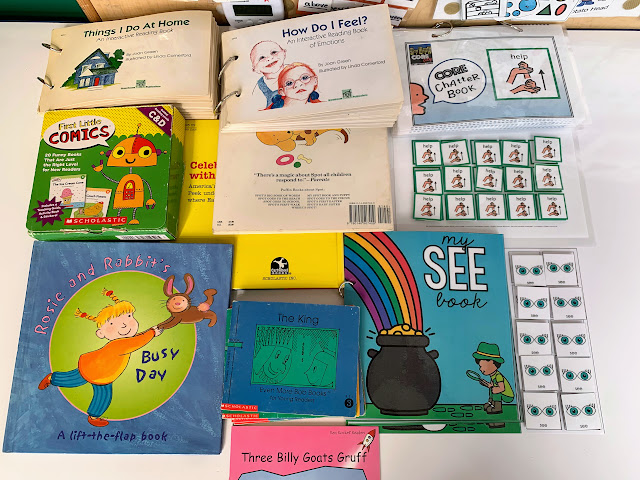In addressing sound discrimination, pronunciation, and working memory in children with cochlear implants or hearing aids, auditory-oral training remains one of the most effective approaches. Research in recent years has reinforced the importance of early and consistent intervention to develop speech and language skills. Here are key strategies and relevant resources that speech therapists can employ:
1. Auditory
Discrimination Training
STRATEGY:
Focused auditory discrimination exercises, a highly effective and
confidence-boosting method, can help children with hearing devices
differentiate between speech sounds. Exercises should involve contrasting
minimal pairs (words that differ by only one sound, like “bat” and
“pat”) to teach sound differentiation. Gradually increasing the complexity
from simple sounds to more complex sentence structures helps children become
better at distinguishing between speech sounds in connected speech.
- RESEARCH: Studies by Flexer & Madell (2019) emphasize structured auditory training for developing discrimination skills, noting that success is tied to how well children can map sound to meaning through repetition and exposure to varied auditory stimuli.
- EXAMPLE: As speech therapists, you can implement a game-like approach where children are asked to distinguish between similar-sounding words (e.g., /b/ vs. /p/) with increasing background noise, reflecting typical classroom conditions. Your innovative and resourceful use of both recorded and live voices to simulate real-world listening environments is crucial.
- RESOURCE: "Children with Hearing Loss: Developing Listening and Talking" by Elizabeth Cole and Carol Flexer. The book provides a detailed auditory-verbal therapy framework to improve auditory discrimination and sound detection. Available on Amazon https://a.co/d/5zI2eNa
2. Articulation
and Pronunciation Practice
- STRATEGY: Improve articulation by practicing sound production and pronunciation in structured activities, a method that has been proven effective. Using auditory feedback through the child's device and visual feedback, such as mirrors or articulation apps, helps them understand how sounds are made.
- RESEARCH: Daniel Ling’s Six Sound Test, developed by Ling, has been widely used to assess a child's ability to detect and discriminate sounds across the speech spectrum, directly influencing articulation. https://www.advancedbionics.com/content/dam/advancedbionics/Documents/libraries/Tools-for-Toddlers/tools-for-parents/The-Ling-Six-Sound-Check.pdf The Ling-6 Sounds Test https://mss-p-007-delivery.sitecorecontenthub.cloud/api/public/content/eaac13c0430e45f98548580c27c5ee4c?v=b09ccc73&MOD=AJPERES
- EXAMPLE: To keep the child engaged, start by practicing isolated sounds (vowels and consonants) that the child struggles with, then progress with practicing the sounds in syllables, words, and sentences. This can be done in play-based settings.
- RESOURCE: "Auditory Verbal Therapy: For Young Children with Hearing Loss and Their Families, and the Practitioners Who Guide Them" by Warren Estabrooks. The book contains strategies for improving articulation in children with hearing loss through auditory training and oral practice. Available on Amazon https://a.co/d/1Nd8hKg
3. Memory
Training to Strengthen Working Memory
- STRATEGY: Improving working memory is crucial for language development, especially for children with cochlear implants or hearing aids. Techniques like Auditory Sequencing Tasks and Repetition of Spoken Instructions help children retain and manipulate information in their working memory.
- RESEARCH: A study by Pisoni et al. (2018) found that children with cochlear implants showed significant gains in working memory when auditory-verbal therapy was coupled with memory-enhancing activities.
- EXAMPLE: Use auditory memory games where the child must recall sequences of spoken instructions, such as “clap your hands, touch your nose, then jump.” Increase complexity by introducing multiple-step instructions.
- RESOURCE: "Cognitive and Working Memory Training in Deaf and Hard-of-Hearing Children" by David Pisoni et al. https://www.ncbi.nlm.nih.gov/pmc/articles/PMC3293211/
4. Incorporating
Visual and Tactile Cues
- STRATEGY: Children with hearing aids and cochlear implants benefit from multisensory learning approaches, such as pairing auditory input with visual cues (e.g., lip-reading or gestures) and tactile feedback (e.g., feeling the vibration of their own voice).
- RESEARCH: Spencer et al. (2020) highlights the benefit of combining auditory with visual learning strategies, which improves speech perception and production in children with hearing impairments.
- EXAMPLE: Use visual aids alongside auditory activities, such as flashcards or interactive software. For example, if practicing /sh/ sounds, the therapist could model the mouth shape while the child mimics it, receiving both, visual and auditory feedback.
- RESOURCE: Hearing Loss: How It Affects Communication https://www.cincinnatichildrens.org/health/h/hearing-communication Language and Communication of Deaf and Hard of Hearing (DHH) Individuals https://apps.asha.org/EvidenceMaps/Maps/LandingPage/04c03287-8b12-ed11-8135-005056834e2b
5. Repetition
and Consistency in Language Exposure
STRATEGY:
Regular and consistent exposure to speech sounds and structured auditory input
is key to solidifying speech and language development. A language-rich
environment is essential to encourage children to use their auditory skills
consistently.
RESEARCH: According to Estabrooks et al. (2016), children benefit from daily auditory routines embedded in their school and home environments, which help them generalize learned speech sounds into everyday contexts. Create routines that involve storytelling, read-aloud sessions, or structured conversations in which the child is encouraged to use newly learned words or sounds. Daily practice and repetition help build memory and articulation accuracy.
RESOURCE:
"Auditory-Verbal Therapy: Science, Research, and Practice" by
Warren Estabrooks highlights strategies to ensure repetition and
consistency in auditory learning for children with hearing loss. Available on
Amazon: https://a.co/d/9MHzrXu



